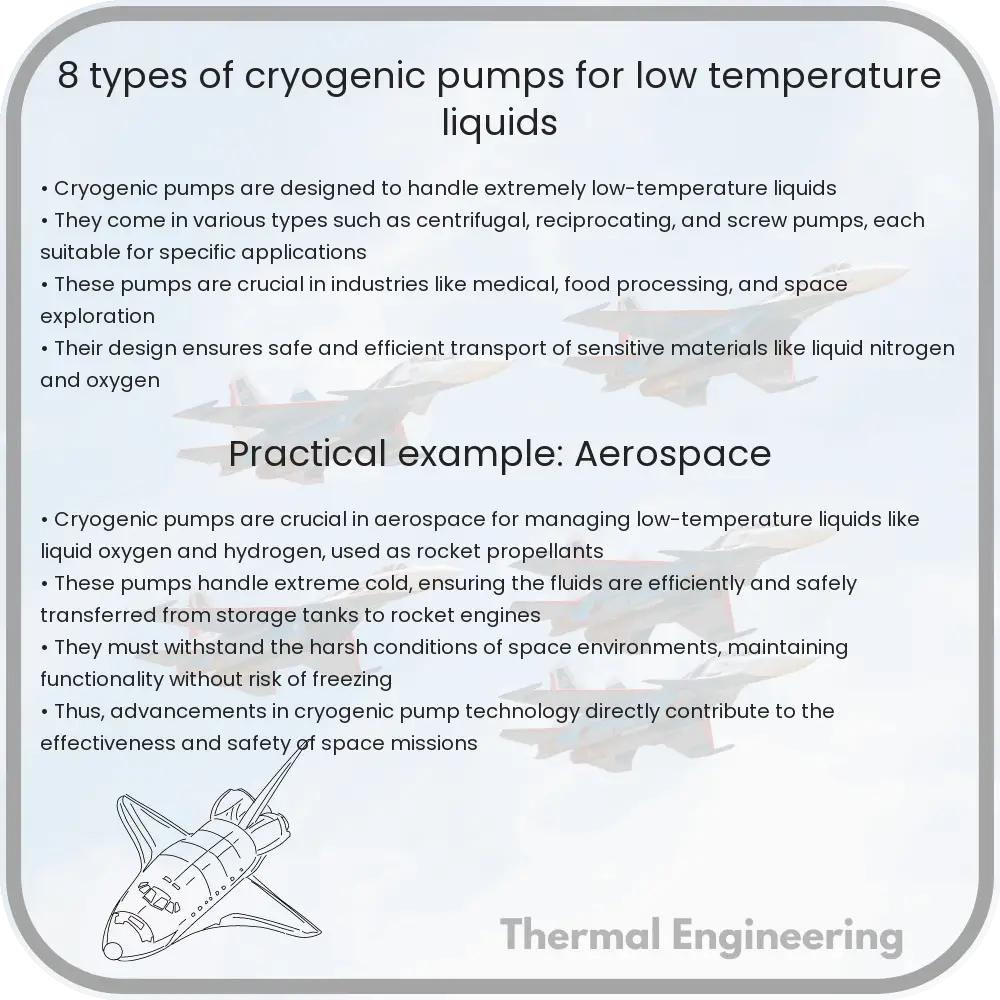A guide to the various types of cryogenic pumps used in handling extremely low temperature liquids across multiple industrial applications.

Understanding the Types of Cryogenic Pumps for Low Temperature Liquids
Cryogenic pumps are essential components in industries that work with extremely low temperature liquids, such as liquid nitrogen, oxygen, argon, and liquefied natural gas (LNG). These pumps are designed to handle fluids at temperatures typically below -150°C (-238°F). The design and operational features of cryogenic pumps vary depending on their specific applications. Here, we explore eight common types of cryogenic pumps and their primary uses.
1. Centrifugal Cryogenic Pumps
Centrifugal pumps are widely used for cryogenic liquids due to their ability to handle large volumes. The operating principle involves a rotating impeller which imparts kinetic energy to the liquid, converting it to pressure energy as it exits the pump. This type is particularly suitable for transferring liquefied gases like LNG from storage tanks to transport vessels or regasification systems.
2. Positive Displacement Cryogenic Pumps
Positive displacement pumps provide a fixed amount of flow for each cycle of operation, making them ideal for precise dosing applications. These pumps function by trapping a fixed amount of liquid and forcing it into the discharge pipe, which is excellent for high pressure and low flow rate conditions often required in cryogenic applications.
3. Submerged Cryogenic Pumps
Submerged pumps operate while completely submerged in the cryogenic fluid, which helps in maintaining the low temperatures necessary for such liquids. They are typically used in applications involving storage and bulk transfer of cryogens in large tanks.
4. Reciprocating Cryogenic Pumps
Reciprocating pumps operate using a piston or plunger mechanism to push the cryogenic liquid from a cylinder through the pump system. Unlike centrifugal pumps, they are more suited for high-pressure applications and are often used in gas processing and distribution systems.
5. Screw Cryogenic Pumps
Screw pumps use two meshed screws that rotate to push the liquid through the pump. These are particularly effective for dealing with viscous liquids or mixtures, commonly seen in the handling and transfer of cryogenic oils or slurries.
6. Diaphragm Cryogenic Pumps
Diaphragm pumps use a flexible membrane that oscillates to create a variable-sized chamber within the pump. This type of pump is highly effective for applications requiring contamination-free pumping because the diaphragm can completely isolate the cryogenic fluid from the atmosphere or pump machinery.
7. Jet Pumps
Jet pumps, or ejectors, have no moving parts and use a high-speed jet of fluid to entrain and transport the cryogenic liquid. They are simple in design and maintenance, often used for applications such as draining tanks or circulating fluids in closed systems.
8. Booster Cryogenic Pumps
Booster pumps are used to increase the pressure of cryogens, particularly in LNG applications, to meet the requirements of high-pressure storage or gasification processes. They generally operate in conjunction with other cryogenic pumps to enhance system efficiency.
Cryogenic pumps are critical components in various industrial applications, where handling low-temperature fluids with precision and efficiency is paramount. The selection of an appropriate cryogenic pump depends on factors such as the type of liquid, flow rate, pressure requirements, and specific application needs. Understanding the different types of cryogenic pumps helps in making informed decisions for effective and safe handling of cryogenic liquids in various engineering contexts.